A History of the County of Buckingham: Volume 3. Originally published by Victoria County History, London, 1925.
This free content was digitised by double rekeying. All rights reserved.
'Parishes: Stokenchurch', in A History of the County of Buckingham: Volume 3, ed. William Page (London, 1925), British History Online https://prod.british-history.ac.uk/vch/bucks/vol3/pp96-101 [accessed 23 April 2025].
'Parishes: Stokenchurch', in A History of the County of Buckingham: Volume 3. Edited by William Page (London, 1925), British History Online, accessed April 23, 2025, https://prod.british-history.ac.uk/vch/bucks/vol3/pp96-101.
"Parishes: Stokenchurch". A History of the County of Buckingham: Volume 3. Ed. William Page (London, 1925), British History Online. Web. 23 April 2025. https://prod.british-history.ac.uk/vch/bucks/vol3/pp96-101.
In this section
STOKENCHURCH
Stokingchurch (xiv cent.).
Stokenchurch is a large parish on the border of Oxfordshire of nearly 5,920 acres, including 2,427 of arable, 1,215 of permanent grass and 970 of woods and plantations. (fn. 1) The slope of the land varies from 418 ft. above the ordnance datum in the east of the parish between Fillington and Barn Woods to 800 ft. near the Aston Rowant border on the main road from High Wycombe to Oxford. The soil generally is stiff loam or clay, the subsoil chalk. The chief crops are wheat, oats and barley. Chairmaking for the London market forms an important industry, and bricks were formerly made here and still are at Cadmore End, once part of this parish. The village is situated in the north of the parish on a lofty spur of the Chiltern Hills on the main road from London to Oxford. It has encroached to a large extent on the common, proof of which exists in the Court Rolls in Mr. H. Clerke Brown's possession, and also in the increasing difficulty of lack of roads as approaches to the houses, with the result that the village green is constantly being cut up. When the common was inclosed in 1861 under the General Inclosure Acts (fn. 2) its use was reserved for the annual pleasure and horse fair on 10 and 11 July, to which great droves of Welsh ponies and Irish horses were formerly brought, though the number has dwindled considerably of late years. The parish is badly off for water and there is only one well dug by Colonel Fane and Mr. John Brown about 1870 after a water famine when beer was cheaper than water. (fn. 3) The church stands to the north of the village and the vicarage at a short distance to the south-east. At each end of the village is a sawmill, and there is a windmill to the south-west. There are also two schools and a Congregational and a Methodist chapel. About a mile to the north-east, standing in large grounds, is Mallard's Court, the property of the executors of the late Rev. Henry Tufnell Young and the residence of Mrs. Flower. Wormsley House, about 2 miles to the south-west, is approached through beech woods on three sides. It has belonged to the Scrope and Fane families for more than three centuries, and is at present occupied by Mr. Frederick William Fane.
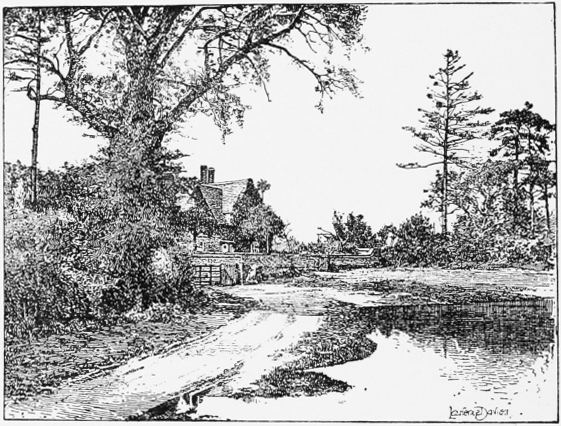
Keynshams Farm, Stokenchurch
There are a number of houses about the village green and also at Horsley's Green (a hamlet about 1¾ miles south-east of the village and just south of the London Road). These were probably built in the 17th century, but most of them have been a good deal altered and restored during later times. Keynshams Farm, on Cadmore End Common, in the southeast, dates probably from the 16th century, but has restorations and alterations of the 17th and 19th centuries; Dell's Farm, south of Horsley's Green, is a building of about the same date refronted in the late 17th century.
The hamlet of Water End lies over a mile to the southeast of the parish church to the east of Saunder's Wood. Further on in the same direction is Beacon's or Bacon's Bottom with a school and Methodist chapel. Chequers Farm and plantation are situated in the south of the parish to the south of the main road from Marlow to Oxford. For the purposes of local government Stokenchurch was transferred from Oxfordshire to Buckinghamshire in 1896. (fn. 4)
The following place-names occur: Pillisdisch (fn. 5) (xv cent.); Sladys (fn. 6) (xvi cent.); Sowers and Stockfield (fn. 7) (xvii cent.); Pophley's Wood and Farm (xx cent.).
MANORS
There is no mention of Stokenchurch in the Survey of 1086, but its later history points to its inclusion under the 20 hides held by Miles Crispin in Aston Rowant (Estone) in Oxfordshire. (fn. 8) In the middle 13th century Aston Rowant Manor was held of the honour of Wallingford as half a fee, (fn. 9) specified in 1279 as including the hamlet of Stokenchurch. (fn. 10) It continued under the honour of Wallingford (fn. 11) and afterwards under that of Ewelme, (fn. 12) and this overlordship is last mentioned in 1661. (fn. 13)
Stokenchurch as a member of Aston Rowant Manor descended successively in the direct line from Haufray to Alan, (fn. 14) Roald and Alan, (fn. 15) and was held by the latter in 1279. (fn. 16) By 1300 it had passed to his son John, (fn. 17) and by 1316 to another son Henry Fitz Alan. (fn. 18) He was succeeded in 1318 by his son Roger. (fn. 19) Later in the century the Fitz Alan rights had passed to Richard Champernowne, (fn. 20) and his grandson Hugh Champernowne, then a minor, (fn. 21) was apparently the heir of Fitz Alan mentioned in 1428. (fn. 22)
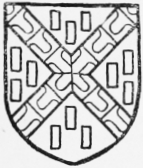
Champernowne. Gules billety or a saltire vair.
No reference occurs to any tenants holding under the Fitz Alans, and the manor may possibly not have been subinfeudated before it came to the Champernownes, since one messuage, I carucate of land and rent in Stokenchurch were held of the latter family by Edmund de Chelrey, who received a grant of free warren here in 1366 (fn. 23) and died in 1372. (fn. 24) His son Thomas succeeded, (fn. 25) but does not seem to have retained the holding. It apparently corresponds to the STOKENCHURCH MANOR held by John son of John Hardwick at his father's death in 1394. (fn. 26) The manor appears to have reverted to the Champernownes as lords of Aston Rowant, and Sir Philip Champernowne, great-grandson of Hugh Champernowne, (fn. 27) granted land on lease in Stokenchurch in 1503 which he was still holding in fee in 1517. (fn. 28) Aston Rowant Manor was afterwards acquired by Henry Courtenay Earl of Devon, who became Marquess of Exeter in 1525. (fn. 29) He sold it in exchange in 1528 to Thomas Unton, (fn. 30) who also held Exchequers Manor in the parish, and the settlement between his great-grandsons Edward and Sir Henry Unton in 1589 (Cadmore End, Fingest) included both Aston Rowant and Stokenchurch Manors. Sir Henry Unton, who had assigned Stokenchurch Manor during his life to Sir Henry Poole and Nicholas Payne, died in 1596, (fn. 31) and in the following year it was sold to John Rotherham of Great Marlow. (fn. 32) It descended with Cublington (q.v.) to William Willoughby, who sold Stokenchurch Manor in 1630 to Henry Lee. (fn. 33) He died seised in 1632 during the minority of his son Henry. (fn. 34) Various people had interests in this manor in 1642. (fn. 35) It was afterwards acquired by John Clerke, who had married Rebecca daughter of the elder Henry Lee, (fn. 36) and he made a settlement of it in 1651. (fn. 37) Stokenchurch Manor descended in the direct line to his greatgrandson John Clerke, (fn. 38) who by his will, proved in December 1771, settled the residue of his property on his widow Ann with remainder to his nephew, another John Clerke. (fn. 39) He settled Stokenchurch Manor in 1787 in trust on his wife Damaris for life, his brother Richard being next in the succession, (fn. 40) and in 1824 it was vested in trustees by Richard Clerke's widow Mary and their daughter Mary Elizabeth. (fn. 41) The latter married Mr. John Brown, and their grandson Mr. Henry Clerke Brown, J.P., of Kingston Blount in Aston Rowant, Oxfordshire, (fn. 42) is the present owner of this manor.
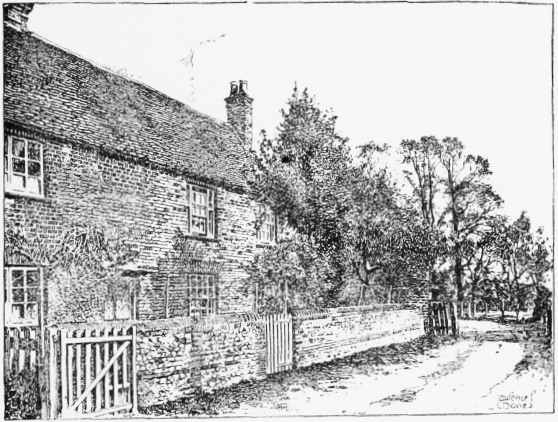
Dell's Farm, Stokenchurch
Some manorial court rolls for the 16th century exist. (fn. 43)
A second manor, STOKENCHURCH alias MALLETS or MALLARD'S COURT MANOR, originated in land held under the Fitz Alans in the 13th century. It evidently derived its later name from Robert Malet, who in 1279 was holding I virgate of land in this parish, formerly Robert Brond's, for 21s. yearly. (fn. 44) In 1295 soon after his death a messuage and a horse-mill are named in the holding to which his son Robert succeeded. (fn. 45) He was holding in 1316, (fn. 46) but there is at present no trace of a later descent of this land in his family. It reappears as the manor of Stokenchurch granted in 1399 by Andrew Norwich, Richard Moldrich and Godfrey atte Pirye to Richard II (fn. 47) and immediately transferred by him to Westminster Abbey. (fn. 48) It was valued at £3 16s. 8d. yearly in 1535, when it was still owned by the abbey. (fn. 49) After the Dissolution this manor was first granted by the Crown in 1542 to Westminster Cathedral, (fn. 50) but afterwards, in 1545, to Walter Hendle and Sir John Williams, (fn. 51) a reserved rent of 6s. 8d. yearly being granted to the latter in 1546. (fn. 52) Sir John Williams, afterwards Lord Williams of Thame, died seised in 1559, (fn. 53) when his daughters and co-heirs were Isabel wife of Richard Wenman and Margery wife of Henry Norreys. (fn. 54) Stokenchurch Manor was included in the estates conveyed by mutual agreement to the latter in 1561, (fn. 55) and was settled in 1576 by Henry, then Lord Norreys, (fn. 56) on his son William on the marriage of the latter with Elizabeth Morison, daughter of Bridget Countess of Bedford by a former husband. (fn. 57) It descended in the barony of Norreys of Rycote, Oxfordshire, to Elizabeth daughter and heir of Francis Earl of Berkshire, suo jure Baroness Norreys and wife of Edward Wray. (fn. 58) He with his wife conveyed it in 1627 to William Kenrick, (fn. 59) who made a settlement of this manor in 1631 (fn. 60) and was succeeded in 1635 by his son Thomas. (fn. 61) William son of Thomas Kenrick had succeeded his father before 1665 (fn. 62) and was created a baronet in 1679. (fn. 63) His son and successor, Sir William Kenrick, bart, (fn. 64) sold the Stokenchurch estate in 1691 to John Mason. (fn. 65) It remained in the Mason family for over 100 years. A settlement was made by a later John Mason in 1743 apparently on his marriage. (fn. 66) The owners in 1811 were Thomas and John Mason, (fn. 67) and they conveyed the manor of Mallard's Court in 1814 to Henry Mant. (fn. 68) In the later 19th century Mallard's Court was for many years in the ownership of the Rev. Henry Tufnell Young, (fn. 69) and is now the property of his executors. (fn. 70)
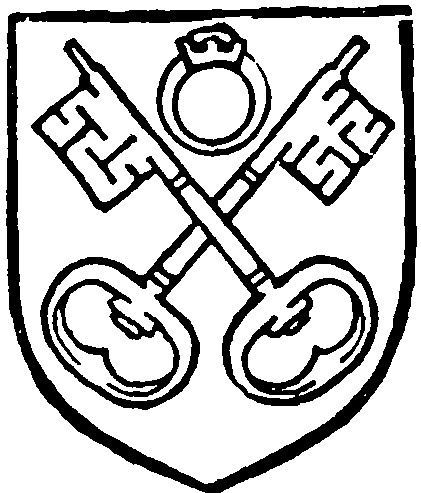
Westminister Abbey. Gules St. Peter's keys crossed saltirewise with St. Edward's ring in the chief.
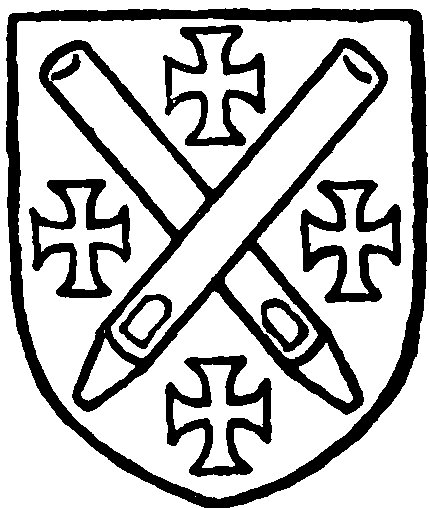
Williams, Lord Williams of Thame. Azure two organ pipes crossed saltirewise between four crosses formy argent.
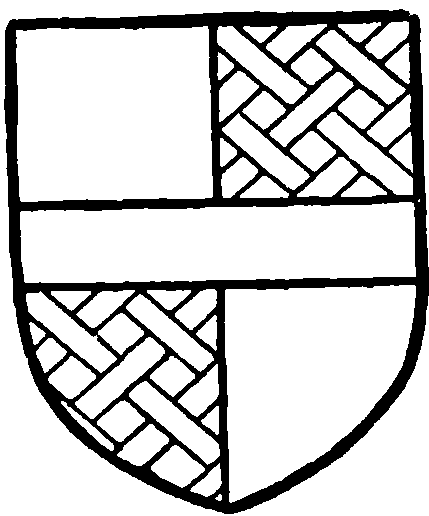
Norreys of Rycote. Argent quartered with gules fretty or with a fesse azure over all.
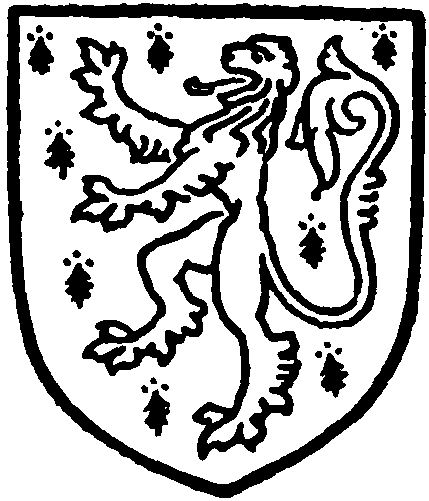
Kenrick. Ermine a lion sable.
A third manor called EXCHEQUERS or CHEQUERS MANOR is traceable through its name to the half fee in the parishes of Lewknor and Stokenchurch held by Roger de Scaccario at his death about 1271 by the serjeanty of being grand usher of the Exchequer, usher of the Jewry and crier before the justices in eyre for all pleas. (fn. 71) His son and heir Lawrence (fn. 72) held 6 virgates of land in Stokenchurch in 1279 (fn. 73) represented in the unspecified half fee in Oxfordshire held in mesne of the Earl of Cornwall to which his son Simon de Scaccario succeeded about 1284. (fn. 74) He died in 1292, when the manor was divided between his sisters Maud, Lora wife of William Payforer, and Beatrice wife of John Peverel. (fn. 75)
In 1414 Robert Morley granted three parts of the Exchequers Manor to Peter Fettiplace and his wife Juliane, with remainder in default of issue to Robert and his heirs and final remainder to Peter and his heirs. (fn. 76) The Exchequers Manor remained in the Fettiplaces and passed to the Untons through the marriage of Hugh Unton with Anne (or Sybil) (fn. 77) daughter and heir of William Fettiplace. (fn. 78) In 1514 their son Thomas afterwards Sir Thomas Unton (fn. 79) agreed to settle this manor in jointure on Mary Bourchier on her marriage with his son Alexander. (fn. 80) The latter, who was also knighted, succeeded his father in 1533, (fn. 81) and was buried at Faringdon in Berkshire in 1547. (fn. 82) His son and heir Sir Edward Unton (fn. 83) made a settlement of this manor in 1579 on his marriage with Katherine Hastings, (fn. 84) and it descended with Cadmore End in Fingest (q.v.) in the Unton, Tipping and Wroughton families. (fn. 85) In 1860 Philip Wroughton sold the property to Thomas Taylor of Aston Rowant House, whose interest passed to Mr. Henry Clerke Brown, J.P., the present owner. (fn. 86)
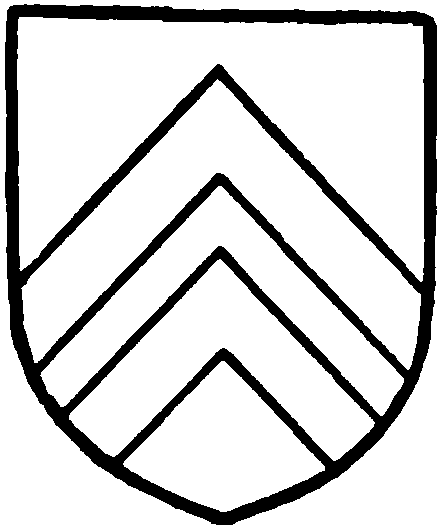
Fettiplace. Gules two cheverons argent.
No reference has been found to the Exchequers estate as a manor after 1763, (fn. 87) but the name survives in the Chequers farm and plantation.
WORMSLEY
WORMSLEY (Woodmundeslee, xiii cent.) in Stokenchurch was held in the middle of the 13th century directly of the honour of Wallingford by the service of a quarter fee worth 40s. (fn. 88) and the payment of one clove gillyflower yearly to the lord of Aston [Rowant]. (fn. 89) Philip de Wormsley enfeoffed John son of Adam de Lewknor, who was holding in 1279. (fn. 90) The later descent is not known till a conveyance by William Waller in 1574 to Adrian Scrope is found. (fn. 91) His grandson (fn. 92) Col. Adrian Scrope was executed as a regicide in 1660, (fn. 93) but in the following year Wormsley Manor, which had consequently become forfeited to the Crown, was granted to his son Thomas. (fn. 94) John, Judge Scrope, succeeded his father Thomas (fn. 95) and made a settlement of this manor in 1714. (fn. 96) By the marriage of his sister and co-heir Anne with Henry Fane, grandson of Francis first Earl of Westmorland, the Wormsley estate passed to their third son Henry Fane, (fn. 97) who died in 1777. (fn. 98) It has since remained in his descendants in the direct line, (fn. 99) and is at present owned by Mr. John Henry Scrope Fane.
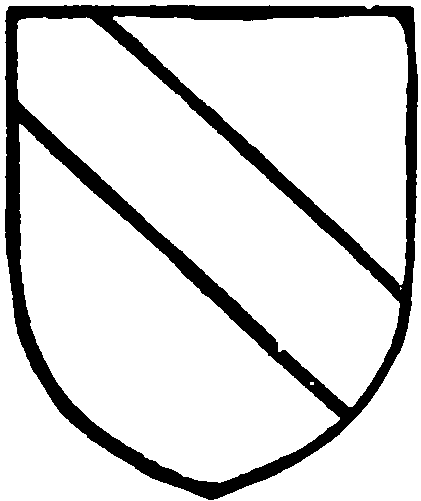
Scrope. Azure a bend or.
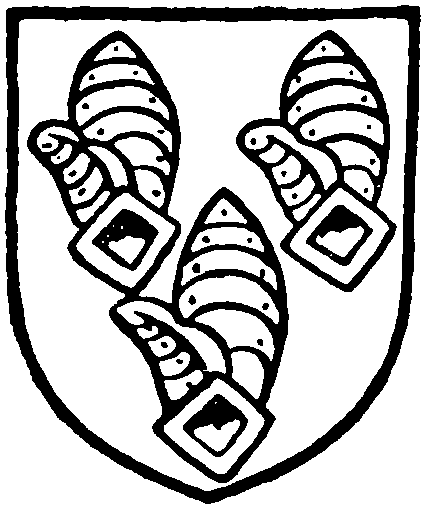
Fane. Azure three gauntlets or.
In the middle of the 16th century WATER END or WATERS MANOR was in the possession of Bartholomew Tipping. (fn. 100) It was afterwards acquired by the Belsons, one of the Roman Catholic families of Oxfordshire, (fn. 101) and conveyed in 1585 by Augustine Belson and his son Robert to John Bowyer, (fn. 102) who transferred his rights in the manor in 1590 to Robert Bowyer. (fn. 103) In 1616 Augustine Belson, Robert's son, (fn. 104) died seised of seven messuages and other property in Stokenchurch, (fn. 105) probably the whole or part of this estate. His son Augustine was then a minor. (fn. 106) The later descent is not known.
Wallingford Priory owned land in Stokenchurch (fn. 107) called in the 14th century STOKENCHURCH MANOR. (fn. 108) It corresponds to the rectory of Stokenchurch, including a tenement called Prior's Grove, which before the Dissolution had been granted by the priory in fee farm for sixty-seven years to Robert Pigott, John Young and William Thornhill. (fn. 109) The reversion was granted to Cardinal Wolsey for his college at Oxford in 1528, but was resumed by the Crown in 1530. (fn. 110) Sir William Spencer died seised of the rectory in 1609, leaving instructions in his will for its sale. (fn. 111) This estate was afterwards split up among various owners. (fn. 112)
In 1279 a hide of land in Stokenchurch was held in mesne by Reynold Beauchamp with Geoffrey de Pockele as sub-tenant. (fn. 113) It was chargeable with suit of court at Wallingford and 4d. yearly to the lord of Aston Rowant. (fn. 114) No later trace of it has been found.
CHURCH
The church of ST. PETER AND ST. PAUL consists of a chancel 28 ft. by 15 ft., nave 64 ft. by 20 ft., north transept 20 ft. by 15 ft., north aisle 34 ft. by 11 ft., south porch and a western bell-turret. These dimensions are all internal.
The nave, which dates from the latter half of the 12th century, was probably lengthened in the 15th century, and the contemporary chancel appears to have been rebuilt during the first half of the 14th century, when the north transept was first erected. In the 16th century the south porch was added and the north transept rebuilt. The fabric was thoroughly restored in 1847, and the north aisle was built in 1893. The materials are flint rubble with limestone dressings, much of the walling being coated with roughcast. The north transept roof is tiled and the roofs of the chancel and nave are covered with lead.
The chancel is lighted from the east by a modern three-light window with some original 14th century inner jamb stones, from the south by two 14th-century windows, each of two lights with tracery under a pointed head, and from the north by one window similar to the last and one of the 15th century of two trefoiled lights under a square head. Between the two south windows, the eastern of which appears to have been raised in the 15th century, when the inner sill was carried down to form a sedile, is a 14th-century doorway with a modern head. In the north wall is a 14th-century locker, which was probably used as an Easter sepulchre in the 15th century, when it was given its present trefoiled ogee head, and in the south wall is a 14th-century piscina with a sexfoil bowl and a cinquefoiled head, above which is a crocketed and traceried gablet flanked by pinnacles supported on head corbels. East of this is a small square recess, and on the north wall is a carved bracket, probably of the 14th century. The pointed chancel arch, dating from the late 12th century, is of two orders, the inner plain and the outer cheveron moulded; one order of the responds is enriched on the side towards the nave by keeled edge rolls with foliated capitals and moulded bases. On the north side of the chancel arch there is a hagioscope.
The nave is comparatively narrow for its length, and is lighted on the south by four windows. The easternmost window is similar to that at the south-east of the chancel; the next, about thirty years later in date, is of two trefoiled lights with a quatrefoil under a pointed head; the third is a 15th-century window of two cinquefoiled lights with head tracery, and the westernmost a 13th-century lancet, probably reset. The south doorway, which dates from the late 12th century, has a moulded two-centred arch with dog-tooth enrichment; the semicircular inner order is modern and the jambs have been considerably restored. The north wall is occupied by an arcade of four bays, the three western of which are modern; the east bay, opening into the transept and dating from the 14th century, is of two chamfered orders, the inner one of which was supported on both sides by head corbels, but the west corbel has been removed to the west respond of the arcade. In the west wall is a 15th-century doorway with a two-centred head and a three-light traceried window of the same period, above which is a reset roundheaded window, now blocked, which probably dates from the late 12th century. At the east of the transept arch is the upper doorway to a rood-loft. The north transept is lighted on the north by a late 16th-century window of three lights under a fourcentred head and on the east by a window of two lights under a square head, probably dating from the same period, while over the north window is a reset trefoiled light of the 15th century. In the east wall is a 14th-century piscina with a cinquefoiled head, a sexfoil bowl and a shelf at the back, and at the west is a modern arch opening into the aisle. Reset in the north wall of the aisle are two 15th-century windows, each of two cinquefoiled lights under a square head, and in the west wall is a reset 14thcentury window of two trefoiled lights with tracery under a pointed head which has been restored. The south porch retains its original four-centred entrance arch, but the jambs are modern, and in each of the east and west walls is a square-headed light, mostly of modern stonework.
The nave roof dates from the late 15th century; its trusses have tie-beams with curved braces, and they are supported on stone corbels carved generally with angels holding shields or with heads, but those at the west, which are later insertions, are plain. The transept has a 16th-century roof with a central moulded tie-beam, over which is a foliated board, which may be a re-used barge-board.
The font has an octagonal limestone bowl with a moulded lower edge, a bell-shaped stem and a moulded base; it is apparently of early 13th-century date and was originally circular, but was recut to its present shape in the 15th or 16th century. The cover is probably of 17th-century date and has a central vertical handle. In the north-west window of the chancel and the west window of the nave are some fragments of old painted glass. On the inner sill of the south-east window of the nave are fragments of two 13th-century shafts, one of which has a foliated capital and the other a moulded capital, with remains of colour decoration of a later date on the back.
On the north jamb of the chancel arch is a mutilated brass figure in plate and mail armour with a French inscription to Roberd Morle, who died in 1410, and on the south jamb is a figure and inscription of similar character to Robert Morle, who died in 1415. In the chancel are two rectangular brass plates with arms, figures and inscription, commemorating Bartholomew Tipping of Chequers, who died in 1632, and two similar plates, one with her figure, to commemorate his wife Martha, who died in the same year. On the north side of the chancel is a mediaeval coffin lid, on which was an incised cross, but the stem only can now be seen, and on the north wall is a monument with arms to Bartholomew Tipping, who founded the free school in the parish and died in 1680. On the chancel floor is a slab to the same person, one to Elizabeth Whistler, his sister, 1693–4, and two other slabs probably of the same period.
There are three bells, of which the first, dated 1640, and the third, 1618, are both by Henry Knight.
The communion plate includes a cup and cover paten of 1574 and a paten of 1684.
The registers date from 1707.
ADVOWSON
Stokenchurch was a chapelry of Aston Rowant with a chapel and cemetery of its own in the early 13th century. (fn. 115) The advowson descended with that of Aston Rowant, and before 1220 belonged to Wallingford Priory, to which foundation the mother church had already been appropriated. (fn. 116) It remained with the priory, (fn. 117) which was dissolved in 1524, (fn. 118) and was included in the Crown grant of the priory estates to Cardinal Wolsey in 1528 (fn. 119) for his college at Oxford. (fn. 120) Further grants of the advowson of Stokenchurch chapel were made in 1531 (fn. 121) and 1532 (fn. 122) to St. Albans Abbey, but since the Dissolution it has been vested in the Crown. (fn. 123) The chapelry of Stokenchurch was severed from Aston Rowant in 1844 and made a perpetual curacy. (fn. 124) It is now a vicarage in the gift of the Lord Chancellor. (fn. 125)
CHARITIES
The following eleemosynary charities are regulated by a scheme of the Charity Commissioners of 20 September 1904, under the title of the united charities, namely, the charity of Francis Deane, founded by will, 1674, being an annuity of 30s. issuing out of Cooper's Court Farm in this parish; Thomas Mason, by will 1711, consisting of an annuity of £3 1s. issuing out of Mallard's Court estate, for providing coats for six poor men and six twopenny loaves of bread; — Newell, gift about 1719, originally the interest of £100 for bread, in respect of which the yearly sum of £4 is now paid by the owner of Pophley's Farm; — Burrows, by will, referred to in the Parliamentary returns of 1786, being an annuity of 14s. issuing out of two cottages in this parish; James Hitchcock, who died in 1817, by his will gave £3 yearly for bread, which is received out of a house and premises in this parish; Sarah Holmes, by will 1829, trust fund, £29 11s. 9d. consols, producing 14s. 8d. yearly for poor widows. The annuity of £3 1s. in respect of Mason's charity is duly applied for the benefit of six poor men, and the other annuities, amounting together to £9 4s., are applied in the distribution of bread, the income of Sarah Holmes's charity being divided among eight or nine poor widows.
The sum of stock belonging to Sarah Holmes's charity is held by the official trustees, who also hold a sum of £100 consols under the title of 'Jodrell's charity,' derived under the will of Sir Richard Paul Jodrell, bart., proved at London, 7 March 1861, the annual dividends of which, amounting to £2 10s., are applicable in the distribution of clothing and blankets amongst necessitous inhabitants most regular in attendance at church, who have maintained the largest families with the least parochial relief.
Tipping's Educational Foundation.
In 1675 Bartholomew Tipping by deed charged certain lands in Shabbington, Bucks., with a yearly rent-charge of £41 0s. 6d. to be disposed of for the schooling and clothing of twelve poor children, for apprenticing two of them, and for other purposes specified in the said deed, including 13s. 4d. to the curate for preaching a sermon on St. Bartholomew's Day. A sum of £275 consols, representing accumulations of income, was in 1858 transferred to the official trustees, of which £26 13s. 4d. consols was in 1904 set aside as 'Tipping's charity for curate.' The income of the foundation is applied for educational purposes in the parish.